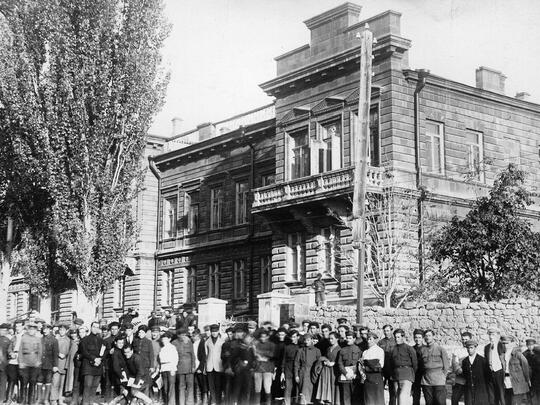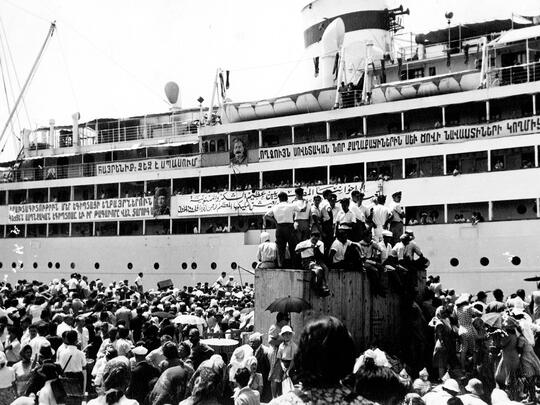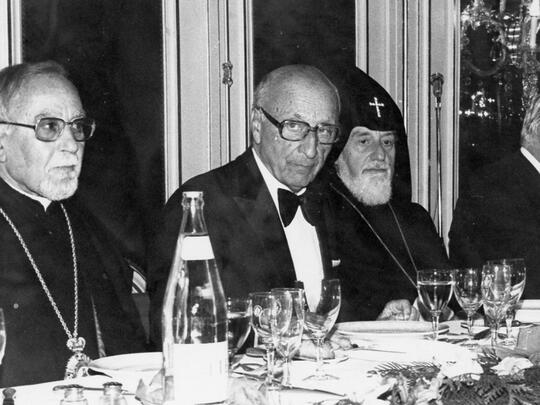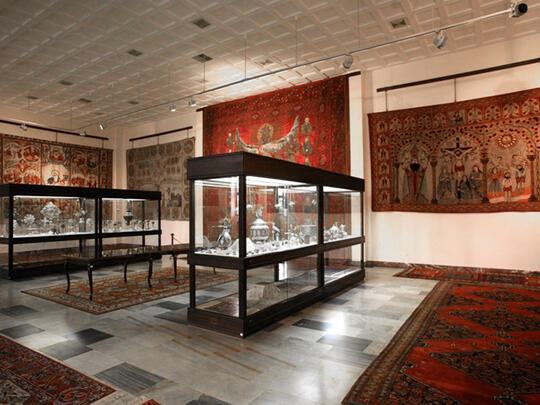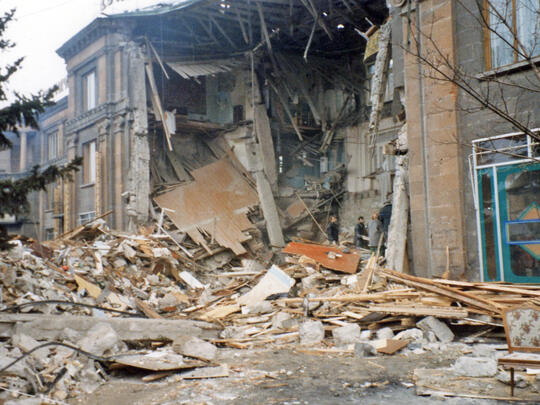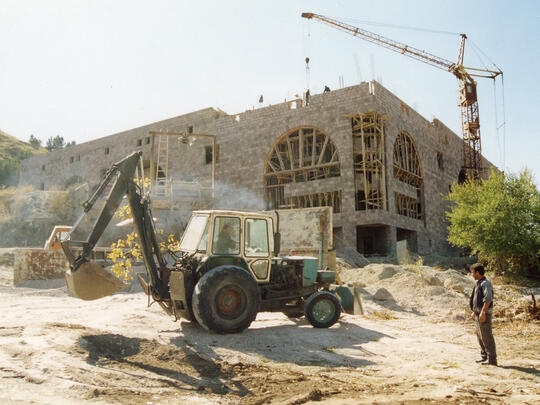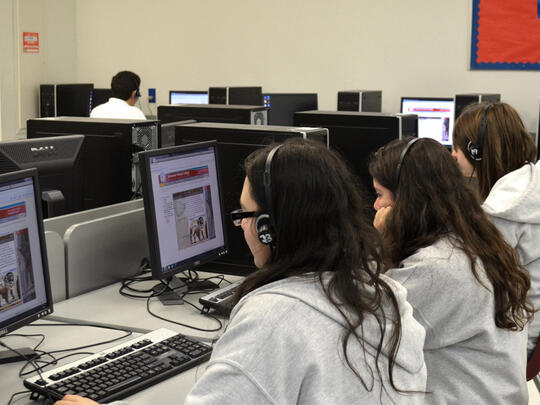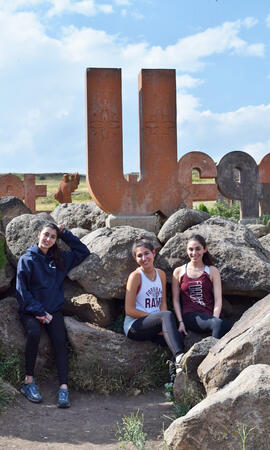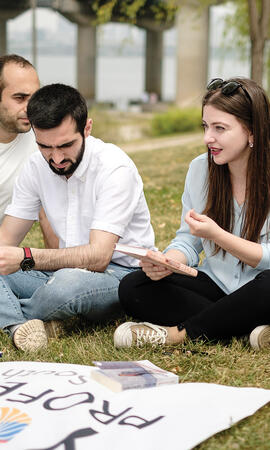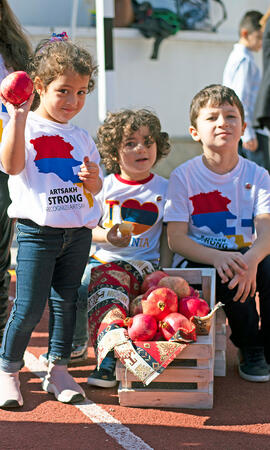Since the very beginning, AGBU has been committed to the development and prosperity of Armenia. Through both tragedy and triumph, we have pioneered and supported initiatives designed to empower the nation and its people. For over a century, AGBU has cultivated a strong, local presence and continues to adapt, identifying a diversity of needs in a shifting reality. Furthermore, our unique position in the vast global Armenian nation has allowed for us to engage the Diaspora as a source of expertise and collaboration, creating opportunities for exchange throughout generations.
Given our trusted reputation and international network, AGBU has strategically partnered with numerous with governmental and non-governmental agencies, non-profit organizations and reputable international institutions, such as the United Nations, the World Bank, and the European Union, to pilot programs, organize events, and implement projects in Armenia. Learn about current our emergency and humanitarian relief work for Artsakh.
Engage with AGBU in Armenia
Connect:
AGBU Armenia welcomes you to explore all that we have to offer. Join us during a visit to Armenia at our impressive offices or connect with us to contribute or volunteer from afar. Email Armenia@agbu.org.
Cultural Events and Forums
We host an array of events to feature new talents, promote important discourse, and support international forums and festivals
AGBU in Armenia
Over a century of commitment to the homeland and its people.
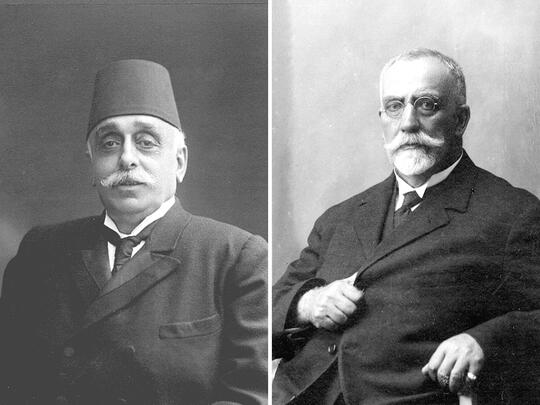
April 15, 1906
1906
The Armenian General Benevolent Union was founded by visionary leaders and an inaugural board of experts and dignitaries, who laid the foundation for immediate impact and growth. Established in Cairo, Egypt on April 15, 1906, AGBU began its longstanding mission of service under the leadership of Boghos Nubar and Yervant Aghaton, who united to form a new model of an Armenian organization - one that was free of the tyranny of totalitarian regimes, and capable of promoting sustainable socio-economic and educational development for Armenians living in the Ottoman Empire.
Within its first two years AGBU formed a broad network of supportive donors from places as far as Addis Ababa, Rangoon, London and Calcutta. With this collective backing, AGBU was able to send relief to Armenians living in Eastern Ottoman Provinces.
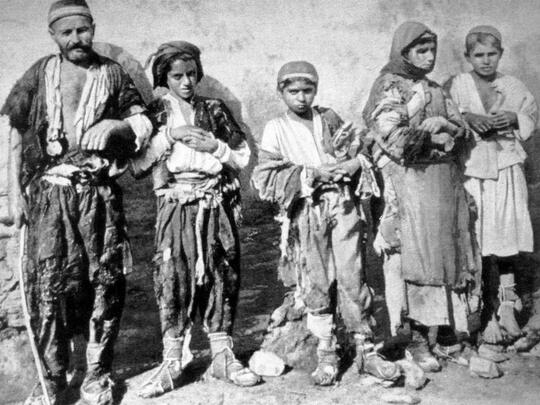
1907
Soon after its establishment AGBU helped the residential areas that suffered from the earthquake in Van, Mush, Agn and Baghesh. In 1907, immediately following its inception, AGBU began providing food and seeds to families in famine-stricken Yerevan.
In its first decade, AGBU remained focused on improving the socio-economic standing of Armenians across the Empire, devoting its efforts—first and foremost—to promoting educational and agricultural development. In 1910 alone, AGBU subsidized some 30 schools and sent farmers the livestock, seeds and tools essential in creating self-sustaining communities.
By 1915 however, only two schools remained, and few Armenian farmers survived in the towns and villages of Anatolia due to Ottoman persecution.
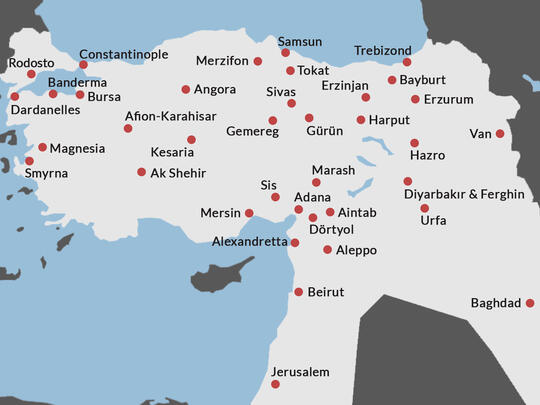
AGBU chapters in the Ottoman Empire (1909-1911).
1909-1911
With insightfully drafted bylaws, AGBU operated freely throughout the Ottoman Empire able to serve countless Armenians in need. AGBU founders agreed that the organization "would not engage in politics but would pursue strictly humanitarian goals." This declaration was necessary to build the network needed to work within the Ottoman empire as authorities were suspicious of all political organizations. As such, the Ottoman government approved the by-laws on March 3, 1910 allowing the organization to serve Armenians in need. In fact, the foresight allowed AGBU to legally establish dozens of active chapters and projects throughout the Empire.
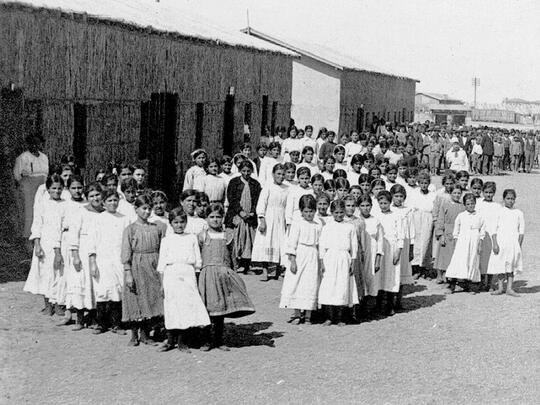
Children in the primary grades at the Sisvan School.
1915-1922
The magnitude of the Armenian Genocide atrocity meant a refugee crises that spanned multiple countries and continents. AGBU and its wide reaching chapters worked to ensure supplies made their way to the hands of tens of thousands of survivors leveraging relationships with various governments. AGBU set up orphanages, schools, trade schools and more to help deported Armenians resettle their lives. One example of the swift action taken took place in Port Said at a camp for refugees from Musa Dagh.
In the fall of 1915, 1,260 children from Musa Dagh were living in Port Said tent camps. In addition to paying for structures for shelter for all the families, AGBU provided funds for a school to open by October of that year. The Sisvan School fed, clothed and educated over 3,000 children by 1917 eventually also becoming a vocational school. This model of initiating humanitarian aid to meet immediate crisis followed by investment for the long-term care of the community is one that would be repeated for over a century to come and continues to be a trademark of AGBU's approach to relief.
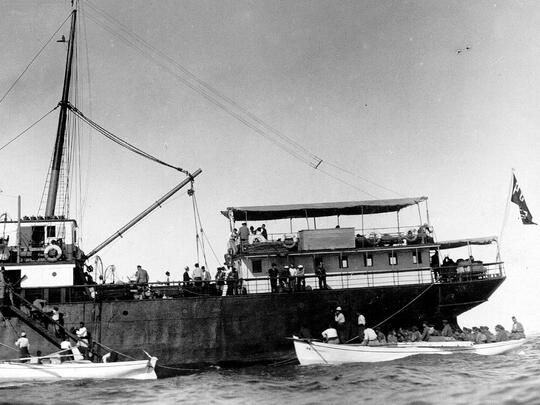
Graduates of the Melkonian Institute in Piraeus in December 1931, on their way to Armenia.
1922-1937
Looking to establish permanent communities with where Armenians could pick up the pieces and build for the future, the Soviet Republic of Armenia appeared a favored option for investment of resources. According to an order passed in 1923 by officials in Soviet Armenia, AGBU became the only all-Armenian benevolent organization allowed to function there with the initial intention to build model farms and agricultural schools and to transfer orphans back to the homeland. Faced with a bleak economic situation and famine, AGBU initiated deliveries of medicine, food and clothing. Over the next 14 years, AGBU worked to provide for the common good: building infrastructure, contributing to rural development, and offering education and care to orphans.
Through AGBU's efforts to repatriate survivors of the Genocide, approximately 17,000 refugees return to Armenia from Europe and the Middle East. It was during this time that AGBU also played a vital role in organizing the transfer of the remains of Komitas to Armenia.

Marie Nubar Eye Clinic.
1929
Identifying the critical need to invest in infrastructure and establish healthcare facilities to advance public health and improve quality of life, AGBU donors established funds to support these efforts. Within a short period of time, AGBU established the Tarouhi Hagopian Maternity Ward (including a school for midwives), the Marie Noubar Eye Clinic, and the Aved Sarkis Rabies Clinic in Yerevan.
In addition this era saw the building of multiple village schools in Plker (Shenavan) and Shiragala (Vertenud) and set up model farms and an agriculture training school in Mersen.






